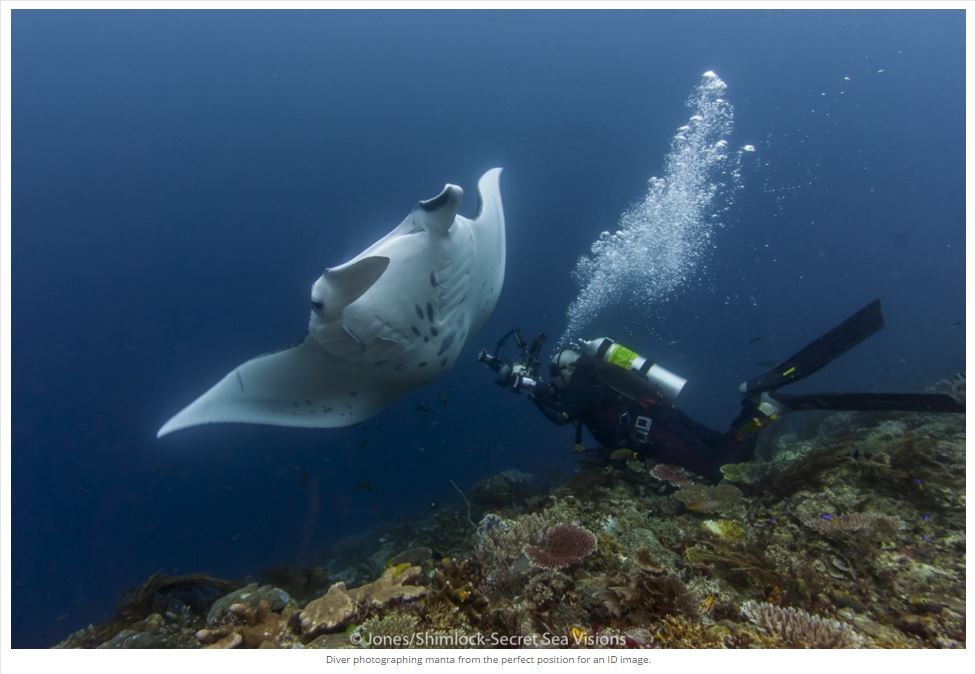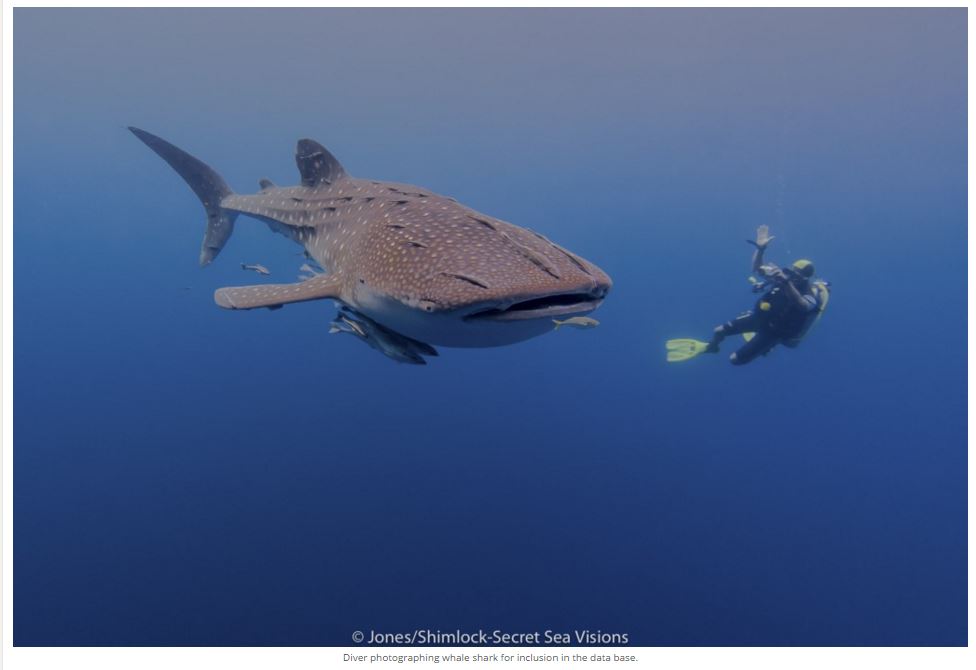News
Calling All Citizen Scientists

A Citizen Scientist is an individual who voluntarily contributes time, effort, and resources toward scientific research in collaboration with professional scientists or alone. These individuals don’t necessarily have a formal science background.
Why everyone who visits the Bird’s Head Seascape (BHS) should become one.
Unquestionably the BHS is beautiful; it also contains the most bio-diverse, intact coral reef systems on the planet. Divers rave about the reefs, and a trip to the BHS is on every diver’s “bucket list”. But with over 225,000 square kilometers of marine area (including 11 Marine Protected Areas, which cover over 36,000 square kilometers), the region is simply too large for NGOs, local organizations and the regional government to monitor adequately. Without your help, collecting data to support scientific and conservation issues is an overwhelming task.
Only a few people had traveled to Raja Ampat before 2002, when Conservation International and The Nature Conservancy completed their initial surveys of the region. Finding unprecedented numbers of marine species and amazingly habitats, these organizations began working on conservation plans. A network of MPAs was established, and patrol teams were empowered to enforce the rules. Word of the region’s marine riches spread beyond the scientific community, and soon intrepid divers began exploring Raja Ampat, Triton Bay and Cenderawasih Bay. Numerous travel articles and two guidebooks, “Diving Indonesia’s Raja Ampat” and “Diving Indonesia’s Bird’s Head Seascape” led to increasing numbers of marine tourists. In 2014 the website, www.birdsheadseascape.com, began promoting diving, photography, and tourism, while providing an internet platform for sharing and archiving all the scientific data being produced in the Bird’s Head, as well as reporting scientific, conservation, and regional news.
In the past year, the BHS site has added new features that enable a traveler to become part of the conservation action in the Bird’s Head. You can become a Citizen Scientist by uploading your images into the site’s Manta Ray and Whale Shark photo ID databases. This is not about “selfies”, or “sharing”, this is about actively engaging in real science and conservation. In order to protect these creatures, scientists need to know the movement of these animals, their health, and their numbers. Unfortunately, scientists cannot to be in the field every day, but divers can. By regularly contributing to these databases, you help us dramatically expand our knowledge of the populations of these charismatic giants in the Bird’s Head – which in turn will help us better design management actions to ensure their continued well-being.
Additionally the Raja Ampat Environmental Watch (RAEW) is designed so that visitors can report an incident such as fish bombing, garbage dumping, or harassment of marine life. By reporting incidents through the app, tourists become virtual patrol team members. Positive encounters, a sighting of unusual marine life or reef & fisheries recovery, are also encouraged.
By becoming involved and using these databases, you, the Citizen Scientist, take an active role in in ensuring the wellbeing of this unparalleled region. Without your involvement your visit is only about you; if you participate, everyone and everything, especially the environment you love, benefits.
WE NEED YOU!
Gear News
Introducing the TR-80, IR-50 and CS-30 Regulators from DYNAMICNORD

Whether you are a beginner or a professional diver – with the three new main regulators from DYNAMICNORD, everyone will find their favourite regulator. They all look super stylish.
Excellent performance with the TR-80
Quality and performance are the be-all and end-all for regulators. It is not for nothing that the TR stands for Tec Reg. The innovative design of the TR-80 guarantees absolute reliability – even in ice-cold waters.

Perfect breathing effort at 0.8 J/l / certified for diving in waters below 10 degrees / structural design made of solid brass for best cold protection / membrane-compensated design with dry seal of the first stage / reduced exhalation effort thanks to optimized exhalation membrane and bubble deflector / adjustable Venturi (dive/predive) and adjustment knob for individual inhalation comfort / innovative design of the front cover prevents free-flow in strong currents or when diving with scooters / design made of sandblasted brass, matt chrome finish / 2 HP and 4 LP outlets / mouthpiece made of high-quality, anti-allergic silicone for maximum comfort.


Amazing underwater adventures with the IR-50
The IR-50 is the top regulator for advanced and experienced divers. Natural breathing is the essence of this regulator.

Ideal breathing effort at 0.8 J/l /certified for diving in waters below 10 degrees / compensated membrane / adjustable venturi (dive/predive) and adjustment knob for individual inhalation comfort/ outlet valve and deflector for minimum exhalation effort and reduction of bubbles on the face / design made of sandblasted brass, matt chrome finish / 2 HP and 4 NP outlets / mouthpiece made of high-quality, anti-allergic silicone for maximum comfort.


The Workhorse – our CS-30
For diving centres and diving beginners – the workhorse stands for strong construction, reliability and robustness. Perfect for your training.

Optimal breathing effort at 0.8 J/l /recommended for diving in waters above 10 degrees / non-compensated piston / adjustable venturi (dive/predive) / outlet valve and deflector for minimum exhalation effort and reduction of bubbles on the face / design made of sandblasted brass, matt chrome finish / 1 HP and 3 NP outlets / mouthpiece made of high-quality, anti-allergic silicone for maximum comfort.


Octopus OP-30
The OP-30 is the ideal addition to all DYNAMICNORD regulators. It is identical in construction to the CS-30.

The TR-80, IR-50, CS-30 (DIN & INT) regulators and the Octopus OP-30 are available from DYNAMICNORD dealers and in the online store.
DYNAMICNORD – Your Outdoor Companion.
Marine Life & Conservation
Paul Watson Released as Denmark Blocks Japan’s Extradition Bid

Renowned anti-whaling activist Paul Watson has been released from custody in Greenland after spending five months in detention. Denmark’s Justice Ministry rejected Japan’s request for his extradition, citing insufficient guarantees that his time already served in custody would be credited against any potential sentence.
The 74-year-old Canadian-American was arrested on July 21 in Nuuk, Greenland’s capital, when his ship docked to refuel. His arrest was based on a 2012 Japanese warrant related to a 2010 encounter in Antarctic waters. Japan alleged Watson obstructed operations and caused damage to a whaling research ship during efforts to disrupt illegal whaling. Watson has consistently denied these claims, maintaining his commitment to marine conservation.
Denmark, which oversees extradition matters for Greenland, concluded that while the legal conditions for extradition were met, the lack of assurances from Japan regarding time-served credit made extradition untenable.
In a video shared by his foundation, Watson expressed gratitude and relief, saying, “After five months, it’s good to be out… and good to know they’re not sending me to Japan.” He added that the most difficult part of his time in custody was being separated from his two young sons.
Watson is a pioneering figure in marine conservation, known for founding the Captain Paul Watson Foundation in 2022 after decades of activism with the Sea Shepherd Conservation Society. His bold efforts to defend marine life have earned him widespread support, including from celebrities and conservationists. His work has also been featured in the acclaimed reality TV series Whale Wars.
Watson’s lawyer, Jonas Christoffersen, praised the decision, stating, “We are happy and relieved that Paul Watson is now free.” He added that Watson is eager to reunite with his family and continue his vital work.
The arrest occurred while Watson’s vessel, the M/Y John Paul DeJoria, was en route to the North Pacific with a team of 26 volunteers to intercept a Japanese whaling ship. His foundation described the arrest as politically motivated and emphasized that Watson’s actions were focused on ending illegal whaling practices.
Japan resumed commercial whaling in 2019 after leaving the International Whaling Commission, asserting that whale meat is a cultural tradition. Conservationists, however, continue to challenge these practices, highlighting their impact on marine ecosystems.
Despite the challenges, Watson remains steadfast in his mission to protect marine life and bring attention to whaling practices. His dedication to ocean conservation has made him a globally respected advocate for the environment.
-

 News2 months ago
News2 months agoIconic SS United States to become the World’s Largest Artificial Reef
-

 News3 months ago
News3 months agoBook Review – 52 Assignments: Underwater Photography
-

 Gear News3 months ago
Gear News3 months agoDYNAMICNORD – New German diving brand enters the British market
-

 News3 months ago
News3 months agoExploring Cenote El Pit: A Diver’s Dream
-

 Gear News3 months ago
Gear News3 months agoTry BARE drysuits (and maybe even win one!) this Friday with Sea & Sea at North West Dive Fest
-

 Marine Life & Conservation3 months ago
Marine Life & Conservation3 months agoBook Review: Coral Triangle Cameos
-

 Blogs2 months ago
Blogs2 months agoDive the Egyptian Red Sea this Autumn with Regaldive
-

 News3 months ago
News3 months ago2024 Ocean Art Underwater Photo Competition Announced


















